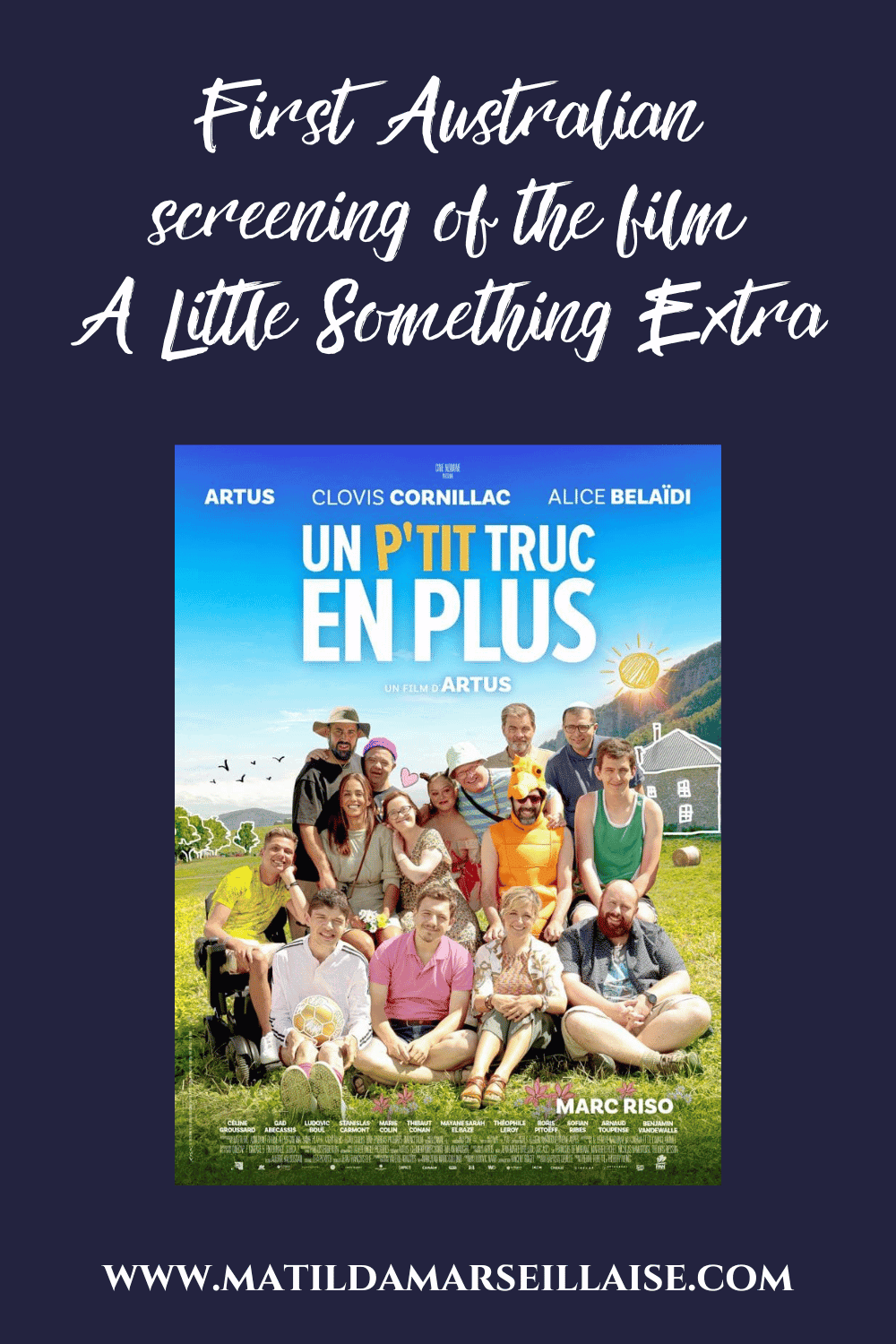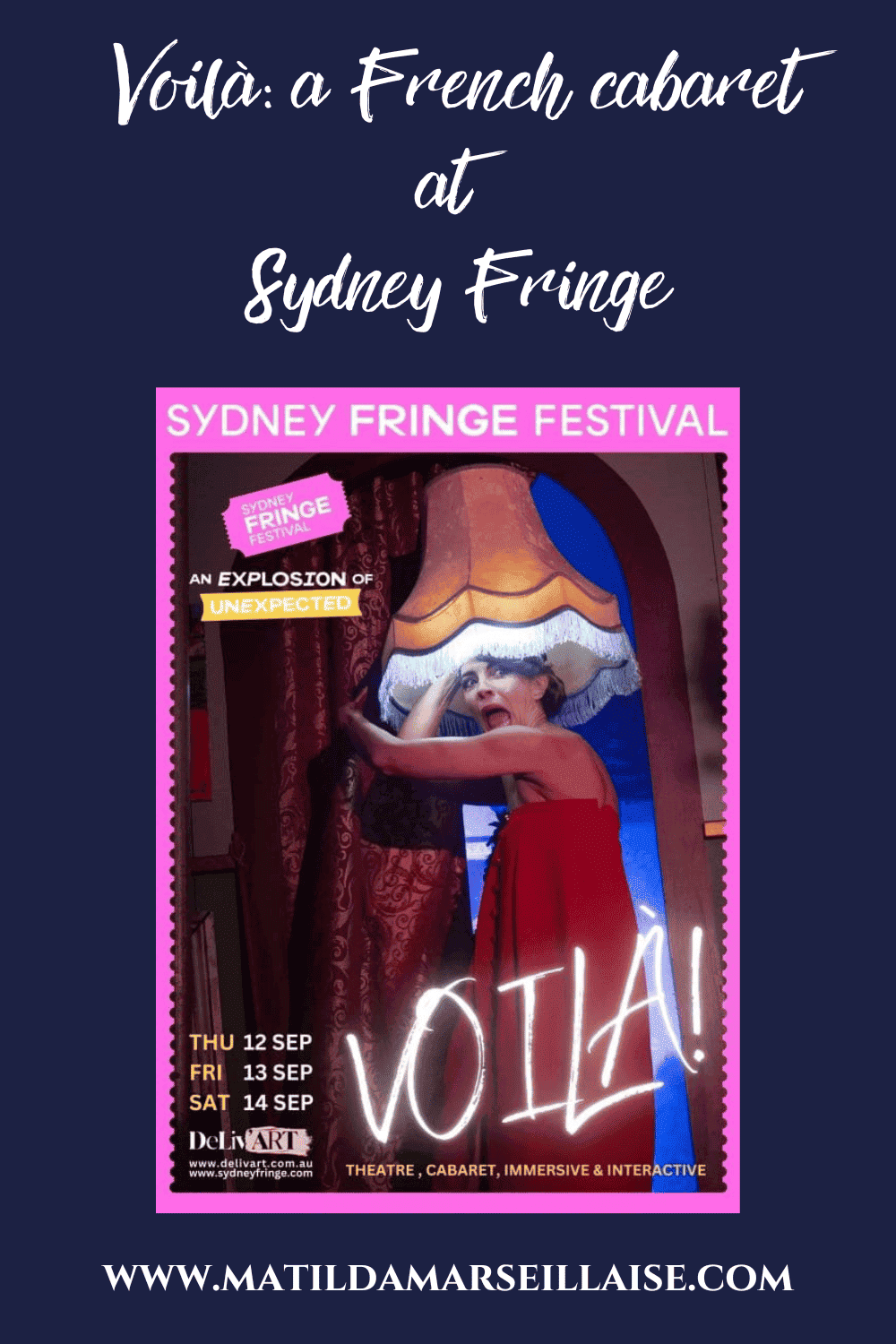Anne-Laure Sol is the curator of the Musée Carnavalet in Paris who worked with the Bendigo art gallery on their exhibition Paris, Impressions of Life: 1880 – 1925. This exhibition combines works from the Musée Carnavalet in Paris with those already in Bendigo’s art gallery. And there’s even a work on loan from the Musée Carnavalet that the museum itself hasn’t yet exhibited. This means that visitors to Bendigo will see this work before Parisians do! There are only four weeks left to see the exhibition Paris, Impressions of Life: 1880 – 1925 in Bendigo. We talk to Anne-Laure.

Anne-Laure, the period of the exhibition Paris, Impressions of Life covers from 1880 to 1925. I see that the Musée Carnavalet itself opened in the same year, 1880. Is this why the exhibition range starts in that year?
No, because the Musée Carnavalet, you know, recounts the history of Paris from the Palaeolithic period, i.e. 4000 BC to the present day. So we chose this period because it seemed emblematic of the city’s transformations at the time, and also because it’s a period with which we could build a lot of bridges with the Bendigo Gallery’s collection of paintings, since you know there are a lot of Australian artists who came to work in Paris at the end of the 19ᵉ and the beginning of the XXᵉ century. And so it’s interesting to show how fascinating the city was at that time. What it represented as a power of attraction for artists and to try to understand what precisely could justify this fascination.
The title of the exhibition is Paris, Impressions of Life. The impressionist period was just before or right at the beginning of this period. Normally we say that impressionist works are impresssions. DId you choose that title for that reason?
So we didn’t want to make any references to Impressionism in the title, even though it’s an artistic movement that’s extremely well known abroad. But we did want to play, if you like, with the polysemy of the word. And that’s because, as you’ll have seen, the exhibition focuses not only on the face of the city of Paris, but also on the way Parisians live there. And so we wanted to show, we wanted to have a sensitive approach to the city by showing how it was actually inhabited, by workers, by people who go to shows, by children, by artists. And it’s this multiplicity of uses, if you like, that we wanted to show, which I think gives the exhibition a very lively, embodied character. In this sense, it corresponds to the term impression.
It’s not only the city of Paris and its structures, its artistes, but also the people who lived there at that time.
Absolutely. It’s a face of the city and its inhabitants. A portrait if you like.

And in the exhibition there are more than 200 works. Among them, paintings of course but there are also lots of other objects. What are these other works?
Alors vous voyez ce qu’on a voulu montrer, justement, c’est aussi l’étendue des collections du Musée Carnavalet et la variété des collections qu’on conserve. C’est à dire que nous sommes un musée d’histoire et que pour raconter l’histoire de la ville, les collections du musée, elles font appel à des objets, à des éléments de mobilier urbain, à du mobilier. Et donc c’est pour ça que dans l’exposition, il y a à la fois des enseignes. Donc, vous voyez ces signes qui étaient accrochés à la devanture des boutiques pour que les gens sachent ce qu’on y vendait ou ce qu’on y trouvait. Il y a aussi une boutique. Vous avez pu voir la boutique du parfumeur Houbigant. Il y a eu également des costumes, mais qui viennent de collections australiennes, donc je suis moins à l’aise pour en parler.
There are also a lot of posters, which, you need to imagine covered the walls of Paris from the end of of the 19th century and at the beginning of the 20th century So they So they also reflect what people could see. And then there are also objects that are a kind of ancestor of derivative products, in particular objects that are linked to the 1889 Universal Exhibition and show you that there was a declension, if you like, of images of the city on many different media.
Did the fact that it wasn’t just paintings make it difficult to transport them to Australia?
Well, difficult, no, it can be organised. But it’s true that it was an added complexity, because you can see, for example, that these signs are very large and very heavy. Special precautions had to be taken to move them. The same goes for objects, fans and plates. These are all objects that require special care.

Did everything arrive safely?
Perfectly.
Fortunately. How did you choose the works that are part of the exhibition?
Pretty soon we were sharing with the Bendigo team, who were great about the whole thing because they were so open. They first came to see the museum. So they understood how things were organized here and the richness of the collections. And quite quickly, we suggested that they build a project that would be like a walk. If you like, a stroll through the city and a stroll that actually called on different types of objects. So we made a number of proposals, and the Bendigo museum chose some of them based on what they too wanted to tell their public, and of course, their space.
Is the exhibition we’re seeing at Bendigo right now one you’ve done yourself in Paris? Have you ever offered it to the Parisian public?
No, it’s an exhibition that’s being shown for the first time. It was made for Bendigo.
How did this partnership actually come about? Did Bendigo want to do something Parisian? Did they really want to do something with your museum from the start?
They really wanted to do something with our museum because they came to see us and it worked out really well from the outset. So I think it’s a chemistry that worked really well. So there are several reasons in my opinion. It’s, as I said, the presence in the Bendigo museum’s collections of Australian artists who came to Paris. I think that established a link. And then, I think the Bendigo Museum is a museum that has had quite a strong connection with the city. You see, it’s a museum in the heart of the city. The people of Bendigo have an emotional attachment to their museum. And so this museum is at the heart of the city, and that’s why it’s quite close to the Musée Carnavalet, which also tells the story of the inhabitants, a delicate story. And so I think there was a common approach. And that’s why it worked so well.
That’s great. And is it the first time you’ve worked with them?
Yes.
And has the Musée Carnavalet already done other exhibitions with other cities or towns in Australia?
Non, it’s the first time.

Bendigo, as you will have seen, when you came, is not a large city, so it’s really quite a coup to be the first Australian town to work with you.
It’s wonderful. We were very happy and We were very happy about all this and we were very, very well received. It went really well. As I was saying, there was a real sense of community and we all wanted to tell the same story.
Yes, that’s great. In fact, how long did it take between first contact and the start of the exhibition?
A little under 2 years.
That’s quite short because often these international exhibitions take years and years. So, it was after COVID that you started your conversations.
Yes, absolutely.
Are there items that we find in the exhibition that you would like to still see in the streets of Paris today?
Well, if you like, the signs Well, if you like, these signs, for example, it’s true that they come from the streets of Paris. They’re still there, you can still see them, but there are far fewer than there used to be. It’s true that it’s a souvenir of the city that we really like, because it tells the story of the city at a certain time. I don’t know if you’ve ever been to the Musée Carnavalet.
No, not yet, unfortunately.
Well, I hope one day you’ll come, and you’ll see that we have two rooms. The introductory rooms of the museum are devoted to these signs. They’re hung just as they were in the streets of Paris.
Which objects in the exhibition are your favourites and which do you think are not to be missed?
There’s a poster by an artist called Manuel Orazi for the racecourse. I don’t know if you’ve seen it, it’s a very, very large poster.

In fact, I haven’t been to Bendigo yet because I’m not in Victoria. But I’m hoping to get there before July.
OK, then. So, there’s this very large poster for the racecourse on Boulevard de Clichy, which is a magnificent poster, very, very large. It’s so big that we don’t often get the chance to show it at the Musée Carnavalet. We were really pleased to be able to do this.
And then there’s also a magnificent painting by Abel Truchet called Le Bal des quat’z’arts, which is also a painting we bought not too long ago and which is a masterpiece of painting from the beginning of the XXᵉ century, which shows a big ball for students from the Ecole des Beaux-Arts in the Moulin-Rouge. And it is being shown at Bendigo for the first time. We haven’t shown it at the Musée Carnavalet yet, so it’s a preview that we’re very excited about.

So we’re getting to see that before the Parisians of today!
Yes, absolutely.
And to get to know you a little better. What was your background before working at the Musée Carnavalet?
I’ve been working for a long time now. To put it briefly, I ran a museum for a long time in a small town near Paris, in Isle-Adam, a small town like Bendigo in fact. And it was very pleasant. And I did that for about ten years. And then I came to work at the Musée Carnavalet.
And now you’re an exhibition curator. Did you study art or history, or both?
Of course, I studied both literature and art history. I’m in charge of the paintings and stained glass department.
And why did you decide to work in museums and art?
Well, I was very lucky. I was brought up in a family where art was very important and we were taught to look at a lot, we travelled a lot and so on when we were young girls. And it’s true that I think that forged my taste.
Were you very creative as a child?
No, not very creative, but on the other hand, I’ve always loved learning, looking, discovering. I’ve always loved going to museums, so that’s something that’s never left me.
So you’ve always enjoyed art.
I always have.
Is there anything else you wanted to tell me about the exhibition that we haven’t covered?
Honestly, I think you really need to see this exhibition. What’s more, I can see that Bendigo is also going to great lengths to organise events on French culture around the exhibition, with lots of guests and workshops for families. So I think it’s more than just an exhibition, it’s a real experience of Parisian life that Bendigo is offering until 14 July.
Yes. And after that, all the works return back home to France?
Yes, absolutely.
—
We thank Anne-Laure and the Musée Carnavalet for this interview and we hope to get to Bendigo to see the exhibition Paris : Impressions of Life 1880 -1925.

KEY INFO FOR PARIS : IMPRESSIONS OF LIFE 1880 -1925
WHAT: Paris: Impressions of Life 1880 – 1925 exhibition
WHEN: until 14 juillet 2024
WHERE: Bendigo Art Gallery
HOW: Buy your tickets via this link.
HOW MUCH: Ticket prices are as follows:
- Adults $30
- Concession $25
- Bendigo Art Gallery Member $ 20
- PGAV Member $20
- ICOM Member $20
- Children 5 to 18 $15
- Family (2 adults + 2 kids) $75
- Children under 5 years of age FREE
Have you already visited the Musée Carnavalet in Paris? Or the Bendigo Art Gallery?
Consultez notre rubrique Que faire en juin pour découvrir tous les évènements ayant liens avec la France et la Francophonie qui se déroulent en Australie ce mois-ci.






